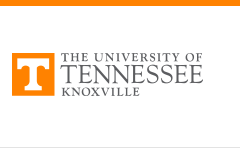
Doctoral Dissertations
Date of Award
8-1989
Degree Type
Dissertation
Degree Name
Doctor of Philosophy
Major
Chemical Engineering
Major Professor
Robert M. Counce
Abstract
Fundamental diffusion and chemical reaction theory have been used to model the Purex process solvent extraction of zirconium. Statistical methods have been used to select an appropriate mass transfer model which permits estimation of the complexation reaction rate constants. A non-reacting process was studied in order to characterize the mass transfer coefficients for the contacting vessel used to study the zirconium-Purex process. Zirconium-Purex equilibrium data existing in the literature were used to estimate the metal complex distribution coefficient, and complexation equilibrium constant. The complexation reaction rate constants, and metal complex distribution coefficient, can be used to predict zirconium-Purex mass transfer behavior in most any contacting equipment.
The Purex process utilizes a nitric acid based aqueous phase and a tri-butyl phosphate (TBP)-dodecane organic phase. TBP is the extracting agent in the dodecane diluent. The practical application lies in reprocessing spent nuclear reactor fuel of which zirconium is a fission product. It is necessary to purify recyclable materials (primarily uranium and plutonium), and isolate the waste (fission products and some actinides).
While a good deal of study has been conducted with zirconium in the Purex process since the 1940's, this work and/or (3) consideration of diffusion or chemical reaction, but not both combined. This study indicated diffusion and chemical reaction both significantly affect the overall mass transfer rate of zirconium for the specific process conditions and contacting equipment of the study.
Recommended Citation
DeMuth, Scott F., "The transport dynamics of zirconium liquid-liquid extraction based on the purex process used for reprocessing spent nuclear reactor fuel. " PhD diss., University of Tennessee, 1989.
https://trace.tennessee.edu/utk_graddiss/11638

